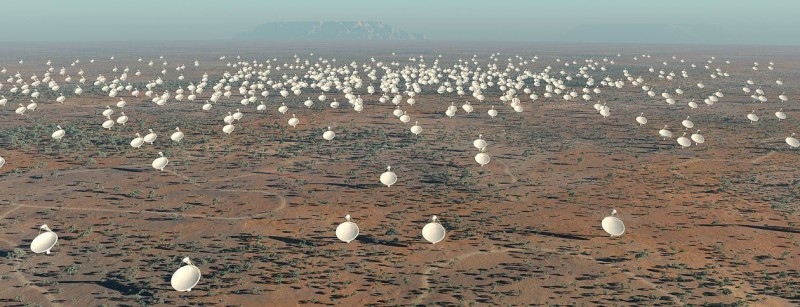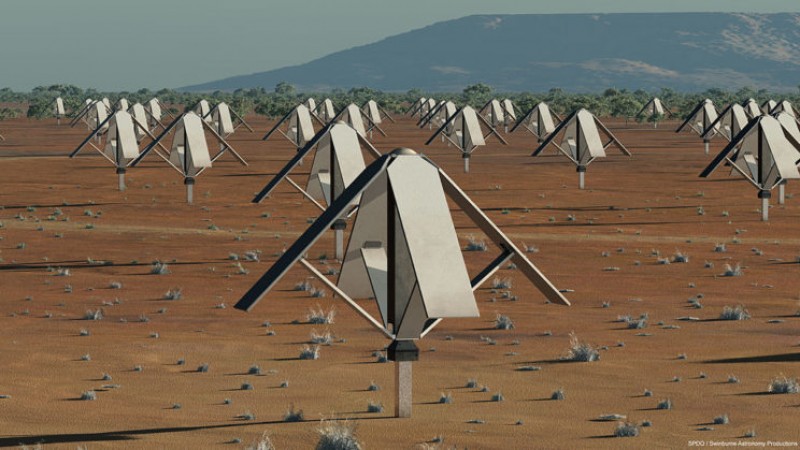Radio astronomy is due to take another huge leap forward from late 2016, when the construction of the Square Kilometre Array (SKA) begins. Combining the techniques of radio astronomy, telecommunications, and vast computer power, the SKA will in due course provide a completely new level of information about objects such as distant galaxies.
 |
| Advances in computing, telecommunications and radio astronomy techniques is paving the way for the next leap forward in astromony: the Square Kilometer Array |
The great leap forward in radio astronomy came in the early 1960s, from a technique peculiar to radio astronomy called aperture synthesis. Radio receivers have a fundamental advantage over optical detectors: they collect radio waves as voltages rather than detecting them as energy. ‘Aperture synthesis’ is the technique by which signals from a large number of different receivers, some separated by large distances, is combined to create the equivalent of a single gigantic radio telescope with the collecting area and sensitivity of the whole combined area.
This is the basis of the SKA – thousands of individual small radio dishes will be combined, making a single telescope with orders of magnitude greater sensitivity than existing radio telescopes. Furthermore, the individual components will be spread over a large area, which is important since the precision with which maps of the sky can be made depends on the spacing between the components of the array. The signals from the individual elements will be combined to form a signal ‘beam’ that maximizes information from a region of the sky, and with modern data processing a number of independent ‘beams’ can be formed simultaneously within a large area. The result is that many regions of the sky can be observed at the same time.
 |
| Artist’s impression of a 100m diameter low frequency Sparse Aperture Array. CC BY-SA 3.0 via Wikimedia Commons. |
Building on the experience of powerful array telescopes, it became possible to design the international project of the SKA. This would assemble elements with a combined collecting area hundreds of time larger than existing arrays, spread over large distances, and connected so that multiple beams could be used simultaneously, operating at a large range of wavelengths from several metres to around one centimetre. A project of this scale could only be achieved as an international collaboration. Selecting a site was critical; there are very few places where the level of radio interference would be low enough, and with an available large flat area. Two desert areas were chosen, in Australia and South Africa; the SKA will be divided between them. Construction Phase 1 starts this year in both locations; the full SKA will take ten years to complete.
Read more: Oxford University Press